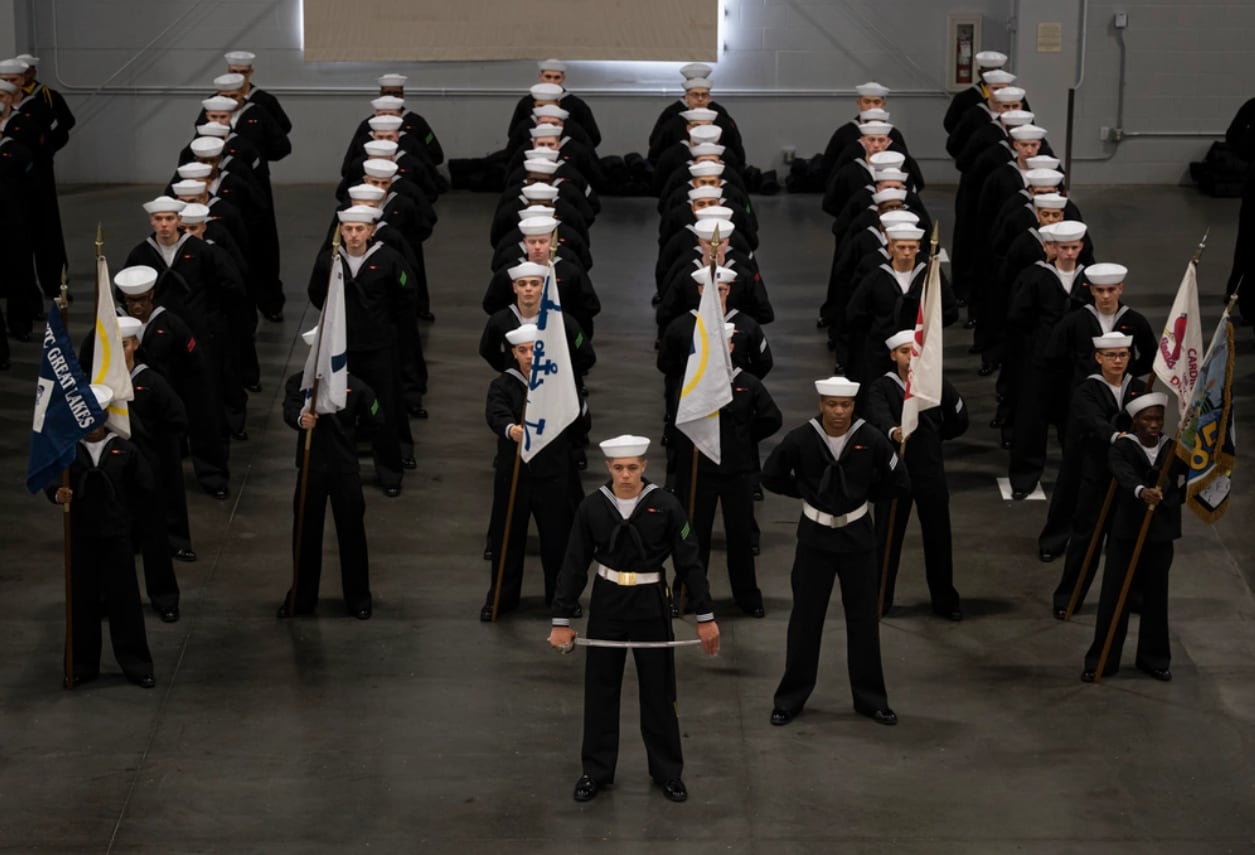Last year, the Navy hit a grim milestone for the first time in its history, one that leaders hoped they would never see.
It missed its recruiting targets by thousands of new sailors, as each military branch – with the exception of the Marine Corps – struggled to bring young Americans into the enlisted ranks.
Navy brass and other service leaders have attributed today’s unprecedented recruiting crisis to a variety of factors, but one thing remains clear for sea service leaders: This cannot continue, and the Navy must chart a different course.
“I think we can absorb one year of missing mission,” Vice Adm. Brendan McLane, commander of Naval Surface Forces, said at the Surface Navy Association’s annual conference in January. “Two years — that’s going to be a problem, that’s going to have an effect.”
Navy leaders insist a variety of measures are in place to fix the problem, but how they will play out this year remains to be seen.
At the end of fiscal 2023 in October, the Navy announced it had recruited 30,236 new active duty sailors, short of its 37,700 planned accessions for the year. The service also recruited 1,948 Reserve enlisted personnel, missing its 3,000 goal.
RELATED
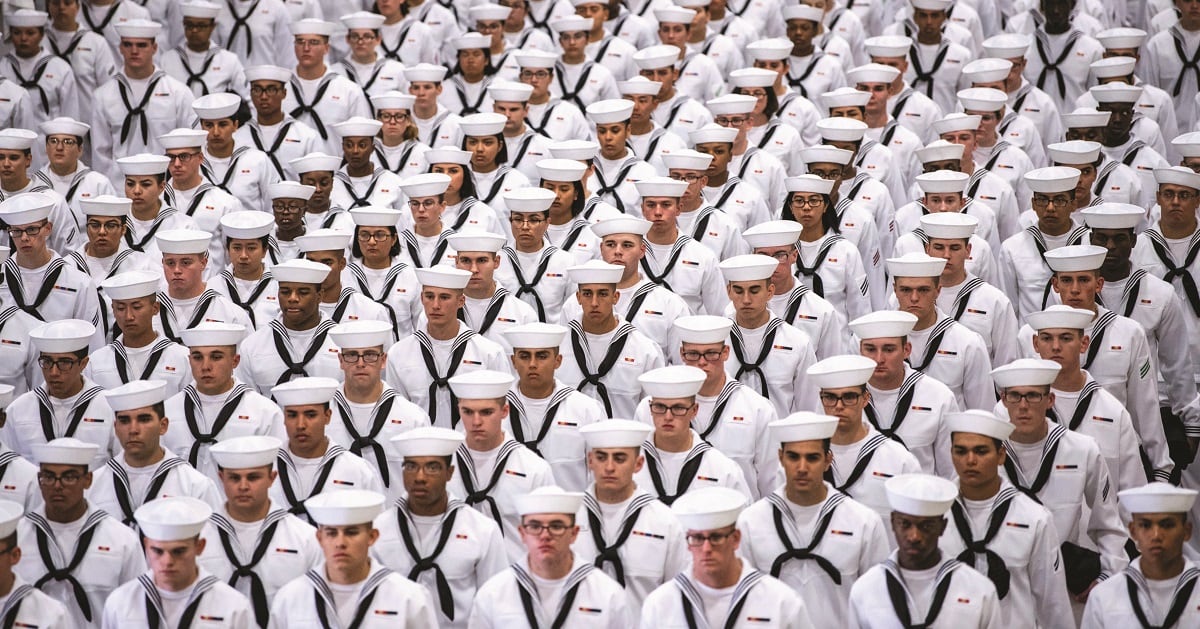
The Navy also did not bring in enough new officers, recruiting only 2,080 new active duty officers rather than the 2,532 target, and 1,167 Reserve officers rather than the 1,940 target.
Even so, the Navy originally braced itself for a more dire outcome at the end of fiscal 2023. The service had expected to fall short by approximately 13,000 recruits at the start of fiscal 2023, Chief of Naval Operations Adm. Lisa Franchetti said in September 2023.
Regardless of reasons, the recruiting crisis is exacerbating a shortage of sailors at sea, according to officials.
There are currently 22,000 gaps in at-sea billets for ranks E1 to E4 – a problem dating back to 2016, but one aggravated by the current recruiting environment, according to the Chief of Naval Personnel, Vice Adm. Richard Cheeseman.
Navy Personnel Command said most manning gaps are at the apprentice level, and units may request temporary personnel to join deployments to ensure full manning needs as a short-term fix.
Fewer recruits entering the fleet means there are fewer apprentices that can serve in sea-duty billets — which could pose problems down the line.
“We can absorb recruiting misses in the short term, but long term if the same trend continues, it would place additional stress on the force, which in turn would impact readiness and capabilities,” Capt. Jodie Cornell, a spokesperson for Cheeseman, said in an email to Navy Times. “The Navy continues to monitor this issue, but to date has been able to take the right steps to ensure the Fleet is fully and properly manned.”
Today’s recruiting crisis also carries with it effects reaching farther into the future.
RELATED
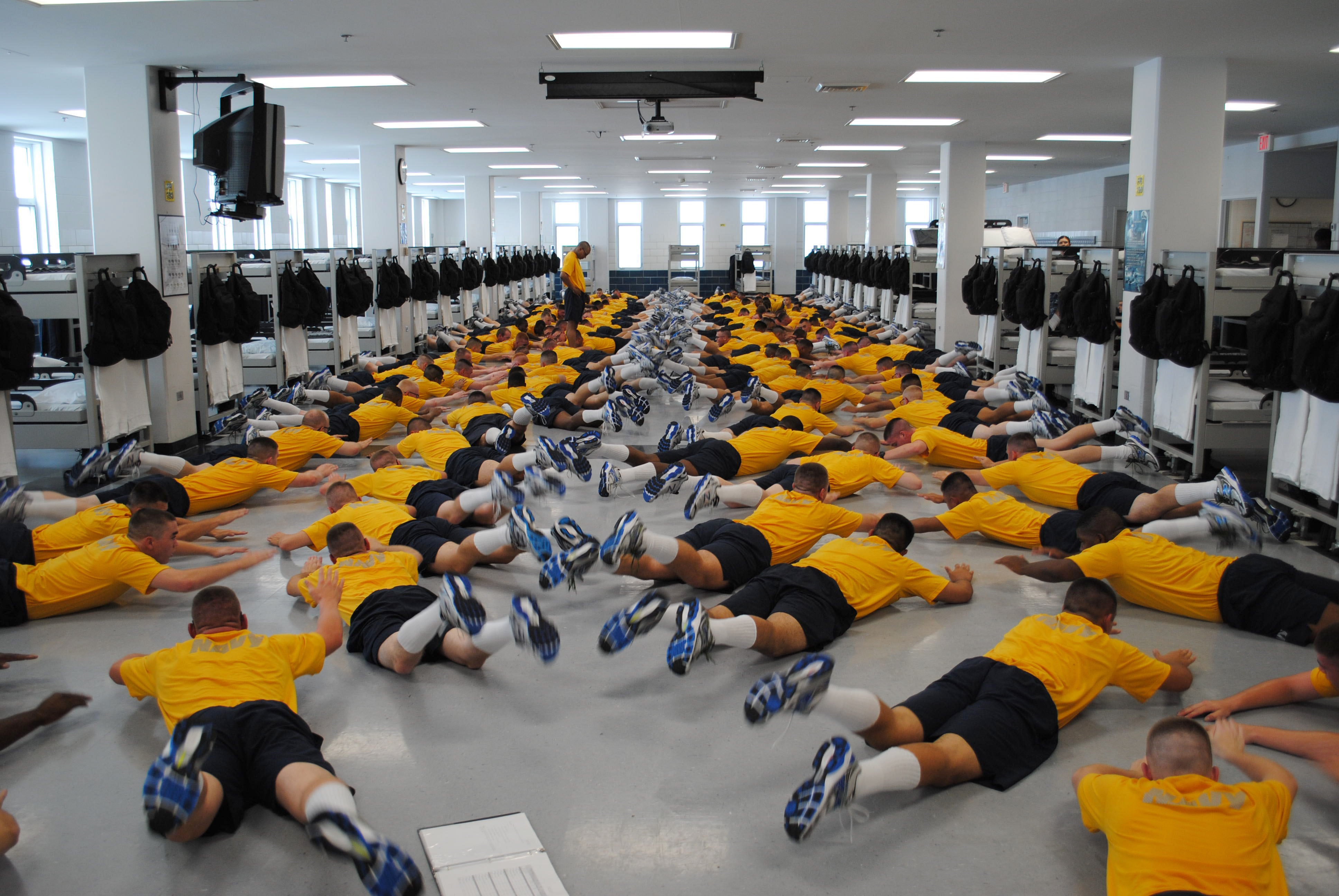
Looking ahead 20 to 40 years, who the Navy does or doesn’t recruit today will impact the future fleet, according to Katherine Kuzminski, director of the Military, Veterans, and Society Program at the Center for a New American Security think tank.
“For every new recruit that’s not coming in today, you affect the entire shape of the pyramid and the quality, and the number of people who are still left to lead 30 years from now,” Kuzminski said.
More immediately, a shortage of fresh sailors poses threats to the Navy getting its myriad of missions done, according to Beth Asch, a senior economist at the RAND Corporation who focuses on military manpower.
“If things continue, we’re going to see problems with force structure,” Asch said. “The Navy’s not going to be able to deploy ships or support them onshore. Force structure gets hurt.”
While high priority units will always remain filled, Asch warned that manning aboard certain ships or ashore in maintenance could become compromised.
Military leaders across the services point to more thorough medical screenings for applicants, fewer Americans eligible to serve and low civilian unemployment as contributing factors the Navy and other services are facing as they struggle to bring in new recruits. Additionally, the COVID-19 pandemic meant that recruiters were limited in their ability to visit high school and college campuses for several years.
Furthermore, desire to serve in the U.S. military is declining – particularly among male youths.
Just 11 percent of males between the ages of 16 and 21 were interested in serving in the military in 2021, down from 22 percent in 2014, according to the Department of Defense’s Joint Advertising, Marketing Research & Studies program’s youth poll.
Kuzminski also noted that the pool of those eligible to join is extremely limited, given requirements including fitness standards or prior drug use that disqualify a broad swath of the American population from joining the military.
“To serve in the military, you have to have that overlap of the Venn diagram between being interested in serving and meeting the standards,” Kuzminski told Navy Times.
Still, some see cause for optimism as the military faces the historic problem.
Asch, who has followed military recruiting issues for 40 years, said recruiting challenges historically attract attention from senior leaders and lawmakers, who then devote money, resources, and enact eligibility changes to bring in more recruits.
“The problems do tend to get solved…There have been recruiting crises in the past and the services, Congress, DOD have been able to address them, but it doesn’t change on a dime,” Asch said. “It takes time.”
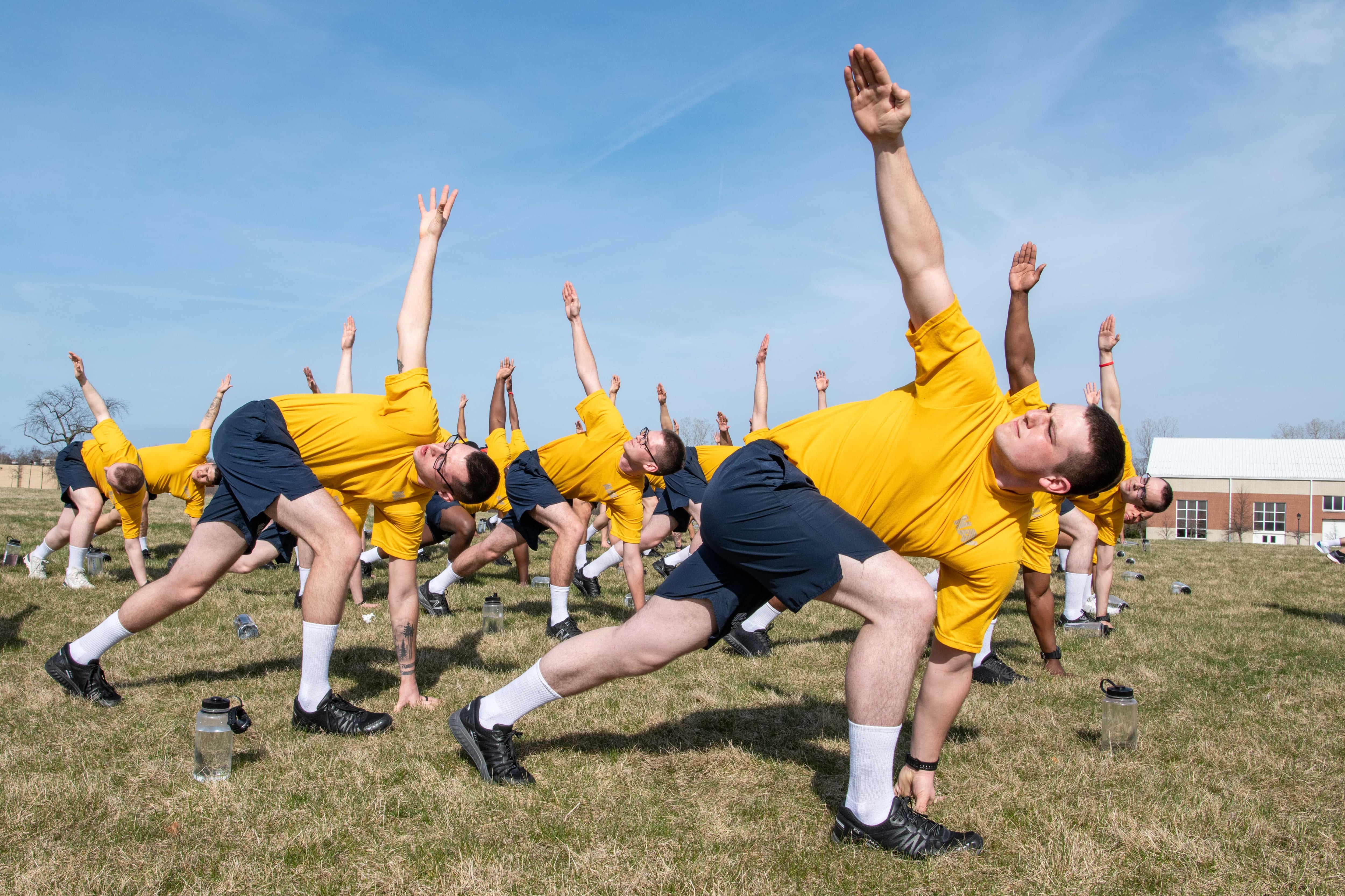
Looking forward
Despite the variety of challenges the Navy faces, some leaders are bullish about where Navy recruiting will end up in fiscal 2024, which ends on Sept. 30.
The Navy had secured approximately 11,300 enlistment contracts as of last month, and is looking to bring in 40,600 new active-duty enlisted personnel by the end of fiscal 2024.
And while forecasting models anticipate the Navy ending fiscal 2024 short roughly 16,000 sailors, Cheeseman said he believes the sea service will perform better than those models predict.
“We did better in ‘23 than we thought...and we’re going to get better in ‘24,” Cheeseman said at the Surface Navy Association’s annual conference in January.
“I am certain through our monthly performance and planning on the recruiting side of things, that we are attacking this problem with data in different ways,” he said.
Despite challenges in fiscal 2023, the Navy secured 6,000 more contracts that year than it did in fiscal 2022 – a year when the Navy depleted its Delayed Entry Program pool to the lowest level in 40 years to meet its fiscal 2022 recruiting goals, Cheeseman said. The program, which allows someone to join the Navy prior to their shipping date, has historically served as a tool for the Navy to buttress mission and recruiting goals.
According to Cheeseman, there were approximately 1,230 scheduled appointments between applicants and Navy recruiters each day in fiscal 2023, but only 879 applicants showed up for an interview, and only 366 were qualified and interested.
Ultimately, the Navy onboarded approximately 140 future sailors each day last year, meaning that just 10 percent of scheduled appointments lead to fresh sailors for the fleet, Cheeseman said.
Cheeseman also noted that young Americans are more likely to enlist if someone “associated with the Navy” offered them an example of sailor life.
“We have a mission, we have a purpose – we’re seeing it today in the Red Sea,” he said. “Young people respond to that. They want to be part of something greater than themselves …it’s very helpful.”
To make recruiting run more smoothly, the Navy launched a Recruiting Operations Center in October that seeks to troubleshoot recruiter issues and make the entire process more efficient, according to Lt. Cmdr. Richard Parker, a spokesman for Navy Recruiting Command.
The center is staffed by personnel from Navy Recruiting Command headquarters, and handles administrative work so that recruiters in the field can focus on making the mission.
The Navy is also working to bulk up its recruiter ranks, a job field that has taken hits in recent years as more sailors have been tapped to fill empty at-sea billets, Cheeseman said.
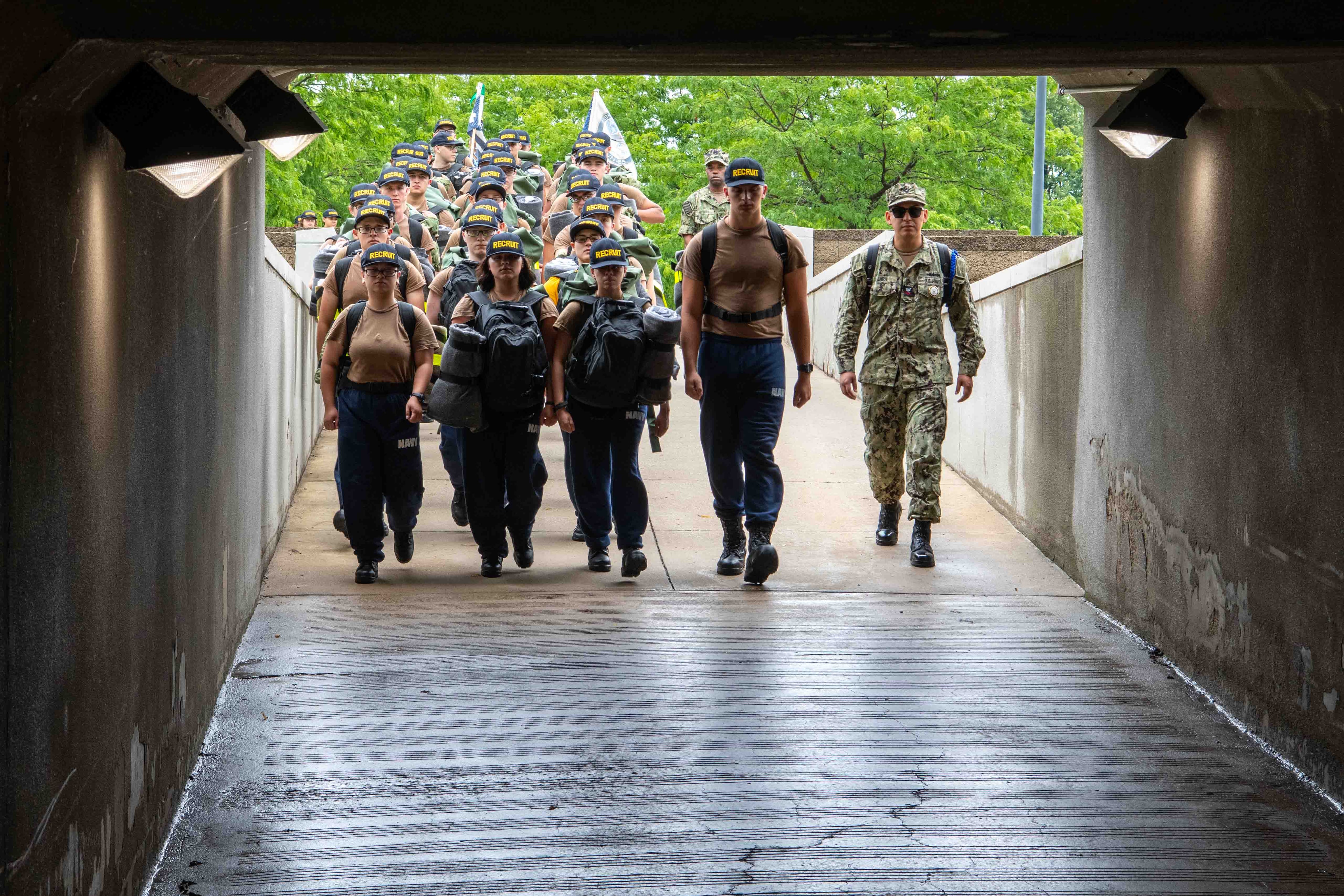
Currently, the Navy’s recruiting force is manned at approximately 80 percent, according to Parker. In order to reach the service’s full staffing goal of roughly 3,600 recruiters, the service is offering extended recruiting tours, and is also allowing reserve component sailors the opportunity to apply for active duty recruiting orders.
These efforts are attracting interest, Parker said, and Cheeseman vowed the service would reach full manning for recruiting in the spring.
The Navy pushed more than 400 recruiters from the offices into the field in fiscal 2023.
“We’re never going to get away from that,” Cheeseman said. “Because this is an existential threat.”
A raft of reforms
Cheeseman said a series of recruiting policy changes and incentives will help move the Navy closer to its recruiting goals as well.
Most recently, the Navy is now permitting those without a high school diploma or General Educational Development credential to enlist, provided they score a 50 or higher on the Armed Forces Qualification Test.
The Navy, which last allowed such applicants to enlist more than 20 years ago, is the only service to permit those without a high school diploma to enlist, and anticipates such a change could bring in 2,000 more sailors a year.
The Navy emphasized that the policy change does not mean the service is lowering its standards, and that these prospective sailors must still qualify for specific ratings based on their Armed Services Vocational Aptitude Battery, or ASVAB, line scores.
Additionally, the Navy adjusted the maximum enlistment age to 41 back in November 2022 – up from 39 – and raised the maximum enlistment bonus to $50,000 in February 2022. For those entering the nuclear field, the Navy announced a $75,000 maximum enlistment bonus last summer.
The Navy also now allows sailors to pair the enlistment bonus with the maximum student loan repayment under the Enlisted Loan Repayment Program.
That means the Navy would cover a potential future sailor’s college tuition loans, like the Stafford Student Loans, if they were taken out prior to the sailor enlisting for active duty. Together, a prospective sailor entering the nuclear field could capitalize on both incentives for a total of $140,000.
Asch said these enlistment bonuses serve as a quick solution in comparison to other initiatives like employing a new marketing campaign or strategy.
“A lot of resources are devoted to military recruiting,” Asch told Navy Times. “We call it the all-volunteer force, but it’s really a recruited force, which means there’s a lot of effort that goes into it.”
Another recent initiative is the Future Sailor Preparatory Course, which kicked off in April. The course focuses on providing physical fitness, nutrition, and life skills training for individuals who are currently too overweight to start basic training.
The program is based on the Army’s Future Soldier Preparatory Course and includes an academic pilot program that the Navy expects to grow in the spring, Parker said. Like the Army’s program, the academic component aims to boost prospective sailors’ Armed Forces Qualification Test scores.
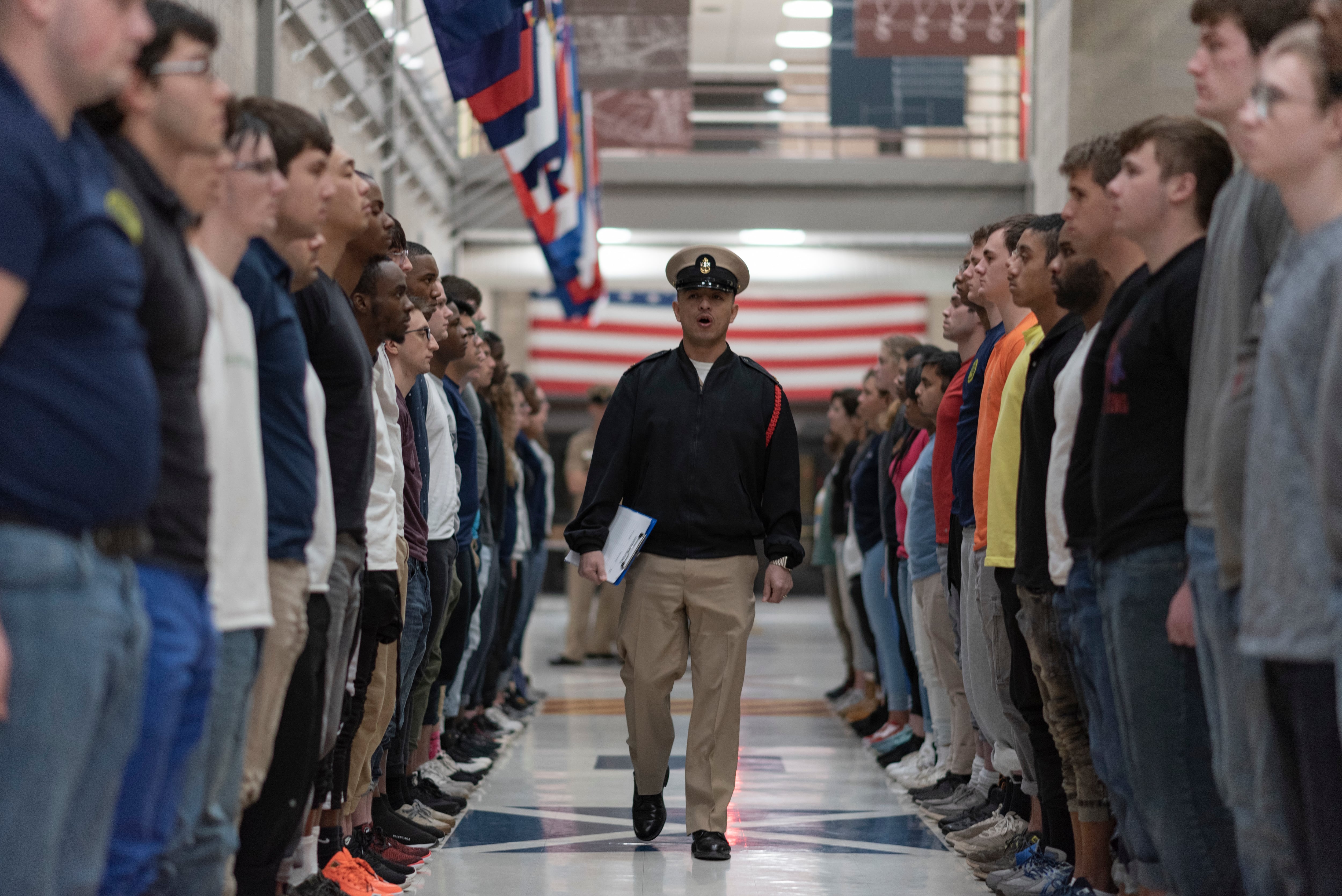
Upon successful completion of the program, potential future sailors then head off to boot camp.
The Future Sailor Preparatory Course claims more than 400 fitness graduates as of January 16, and nearly 200 academic graduates who then advanced to basic training at Naval Station Great Lakes in Illinois.
Of those graduates, nearly 300 from the fitness program completed boot camp, as well as 90 from the academic program, Parker told Navy Times.
The service anticipates up to 8,000 potential future sailors will complete the Future Sailor Preparatory Course in fiscal 2024,.
The service also launched a pilot program in December 2022 allowing sailors who scored lower on the Armed Forces Qualification Test to still enlist in the Navy. The change allows prospective sailors who score between the 10th and 30th percentile on the AFQT to join if their ASVAB individual line scores are high enough to qualify for a Navy rating.
Lower your standards?
While Navy leaders say adjusting standards offers more young people the chance to serve, outside analysts questioned what it will mean for the quality of the force in the future.
Asch said it’s “worrisome” that the Navy is bringing in more low-aptitude individuals, given the Navy’s highly technical job demands.
Past studies have shown a correlation between aptitude scores and job performance, Asch said, although she noted those studies were conducted decades ago.
“So the question is, what are these people doing and how are they performing?” Asch said. “Are they being channeled into occupations that are less technical?”
In the case of those who’ve completed the Future Sailor Preparatory Course, Asch said it remains unclear whether the program is creating more competent sailors, or if it’s simply training prospective sailors for a test – akin to a student who undergoes an SAT prep course to boost his or her final score but fails to meaningfully improve proficiency.
“When they are in those technical skills in the units, did we really improve their capability and performance?” Asch said. “Or did we just give them better testing scope? I don’t know the answer to that.”
Asch encouraged Congress to require the services to conduct a “rigorous analysis” of what happens to those who scored lower on the ASVAB and completed the Future Sailor Preparatory Course once they enter the Navy.
Kuzminski is also interested in how these sailors perform, but noted that those who have undergone the Future Sailor Preparatory Course clearly show strong interest serving in the Navy by going through the prep program in the first place, and therefore could perform well.
“They took an extra step on the way there, so I think even if the numbers are small, the promise is large,” Kuzminski said.
As the Navy directs its attention to manning, one area the Navy could tap into is revamping how a recruiting tour impacts a sailor’s career progression, according to Kuzminski.
For example, the Marine Corps requires all officers to spend time in either a recruiting or basic training unit, and serving in a recruitment billet is a requirement for promotion in the Marine Corps.
But that’s not the case for the Navy, where the career timeline is such that serving in a recruiting billet ashore is not a career-advancing requirement and can even be seen as a negative when certain career fields prioritize sea time, Kuzminski said.
The Navy would benefit from a cultural shift rewarding those who served in recruiting billets, she added.
Additionally, the Navy should explore new ways to attract older recruits, Kuzminski said.
“Rethinking the model of a recruiter and a high school being the real driver of recruitment I think needs to be relooked, as we think about people who may have graduated high school and gone to college and decided they wanted to change their path or who … took a little longer to mature, but now they’re 25 or 26,” Kuzminski said.
Asch acknowledged that the Navy’s recruitment goals for fiscal 2024 were ambitious, but said they are still feasible with the right resources, management and proper policies in place. But the Navy may need to compromise on the quality of people they recruit, she warned.
“Ultimately, the goals are attainable,” Asch said. “It’s just to what extent you are bringing in people who have less desirable characteristics.”
